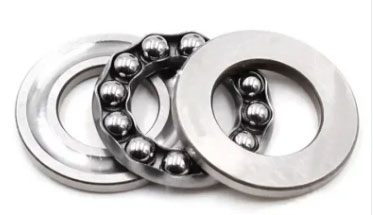Home / News / Understanding Thrust Roller Bearings: Functions, Types, and Applications
Understanding Thrust Roller Bearings: Functions, Types, and Applications
Thrust roller bearings are mechanical components that play a crucial role in supporting heavy axial loads in various industrial applications. They are designed to withstand high thrust loads and maintain stability even in harsh operating conditions. In this article, we will discuss the functions, types, and applications of thrust roller bearings.
Functions of Thrust Roller Bearings
Thrust roller bearings are used to support axial loads, which are forces that act parallel to the axis of rotation. They are designed to handle both radial and axial loads but are primarily used for axial loads that require high precision and high-speed rotation. They can operate at high speeds, making them suitable for high-speed applications such as machine tools, wind turbines, and aerospace equipment.

Types of Thrust Roller Bearings
There are several types of thrust roller bearings, each designed for specific applications. The most common types include:
Cylindrical roller thrust bearings: These bearings have cylindrical rollers that are parallel to the axis of rotation. They are suitable for applications with moderate speeds and heavy loads.
Tapered roller thrust bearings: These bearings have tapered rollers that are inclined to the axis of rotation. They are designed to handle heavy axial loads and are commonly used in applications such as automotive transmissions and heavy-duty machines.
Spherical roller thrust bearings: These bearings have spherical rollers that are oriented to the axis of rotation. They can accommodate misalignments and are suitable for applications with heavy axial loads and moderate speeds.
Needle roller thrust bearings: These bearings have needle rollers that are arranged in a cage. They are suitable for applications with limited space and low axial loads.
Applications of Thrust Roller Bearings
Thrust roller bearings are widely used in various industrial applications that require high precision and high axial load capacity. Some of the most common applications include:
Automotive industry: Thrust roller bearings are used in automotive transmissions, steering systems, and axles.
Aerospace industry: Thrust roller bearings are used in aircraft engines, landing gear, and control systems.
Construction industry: Thrust roller bearings are used in cranes, hoists, and other heavy machinery.
Power generation industry: Thrust roller bearings are used in turbines, generators, and other power generation equipment.
Conclusion
Thrust roller bearings are essential components in various industrial applications that require high axial load capacity and high precision. Understanding the functions and types of thrust roller bearings can help in selecting the right bearing for a particular application. It is crucial to choose a bearing that can withstand the operating conditions and provide reliable performance for a long time.
- Previous: Understanding Spindle Bearings: Types and Applications
- Next: An Introduction to Thrust Ball Bearings: Structure, Function, and Applications













